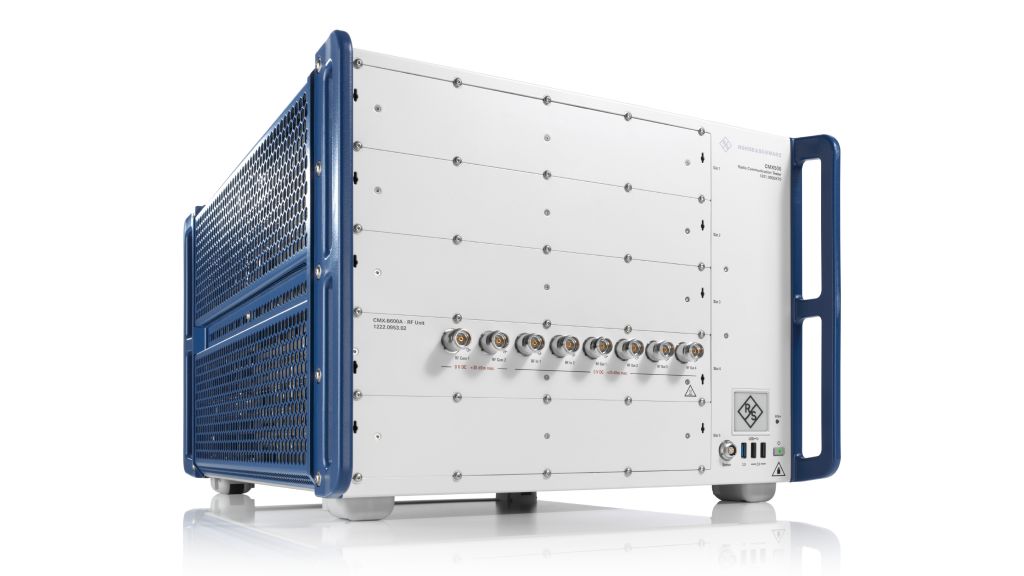EU energy efficiency index regulations for mobile devices
The CMW500 wideband radio communication tester and the CMX500 radio communication tester are ideal for testing smartphones and tablets to meet EU energy efficiency index standards.

The CMW500 wideband radio communication tester and the CMX500 radio communication tester are ideal for testing smartphones and tablets to meet EU energy efficiency index standards.


Your task
The EU energy efficiency index (EEI) label aims to promote sustainable consumption by providing clear information about the energy efficiency of smartphones and tablets. From June 20, 2025, energy labeling requirements will apply to all smartphones and tablets entering the EU market. The 2023 regulations do not set specific energy efficiency equirements. Instead, they focus on promoting devices that can operate for a long time on a fully charged battery or offer high energy efficiency. This initiative aims to reduce the frequency of recharging, helping consumers make more informed and sustainable purchasing choices. The energy labeling scheme encourages manufacturers to optimize the durability and lifetime of the device, which contributes to a sustainable consumption model and reduces the environmental impact.


Rohde & Schwarz solution
Rohde&Schwarz, in collaboration with SmartViser and its viSer test automation application, provides a comprehensive suite of tools and solutions for testing and validating the energy efficiency of smartphones and tablets in accordance with the EU EEI label requirements. The CMW500 and CMX500, combined with the viSer app, offer a controlled environment for end-to-end testing of energy efficiency functionalities. The CMW500 is ideally suited for EEI testing in 4G/LTE environments. For a futureproof solution, the CMX500 supports 4G testing and can be upgraded with a software license to 5G if needed.
Key components of the EEI label
The label includes several key components:
Energy efficiency index
The EEI is calculated using the test results on a scale from A to G, with A indicating the highest level of energy efficiency and G the lowest. The following formula is used:


EEI stands for the energy efficiency index (in 1/W), ENDDevice represents the battery endurance in hours, Unom is the nominal voltage (in V) and Crated denotes the rated battery capacity (in mAh).
EEI ratings
The table below provides a detailed breakdown of the EEI ratings, illustrating how each device category is assessed and classified in accordance with their energy efficiency performance. Smartphones and tablets each have their own distinct energy consumption patterns and usage scenarios.
| Energy efficiency classEnergy efficiency class | Smartphones | Slate tablets | ||
|---|---|---|---|---|
| A (most efficient) | EEI > 2.70 | EEI > 7.90 | ||
| B | 2.30 < EEI ≤ 2.70 | 6.32 < EEI ≤ 7.90 | ||
| C | 1.95 < EEI ≤ 2.30 | 5.06 < EEI ≤ 6.32 | ||
| D | 1.66 < EEI ≤ 1.95 | 4.04 < EEI ≤ 5.06 | ||
| E | 1.41 < EEI ≤ 1.66 | 3.24 < EEI ≤ 4.04 | ||
| F | 1.20 < EEI ≤ 1.41 | 2.59 < EEI ≤ 3.24 | ||
| G (least efficient) | EEI ≤ 1.20 | EEI ≤ 2.59 | ||
Test schedule
The testing procedure for determining the EEI in a 4G mobile network emulated by the CMW500 or CMX500 involves distinct sequences for smartphones and slate tablets. The test sequence starts with a 100% battery charge level and repeats the cycle until the device powers off.
The basic procedure for both smartphones and tablets includes elements such as phone calls (for smartphones), web browsing, video streaming, gaming, data transfer and video playback, interspersed with idle periods. While the fundamental structure of the test is identical, the specific activities and the duration of each element differ between smartphones and tablets to reflect how they are typically used.
Summary
The EU EEI label is a significant step toward promoting sustainable consumption by providing clear information about the energy efficiency of smartphones and tablets. Rohde&Schwarz, in collaboration with SmartViser and its viSer test automation application, offers essential tools for testing and validating these devices in accordance with EU EEI requirements. The CMW500 and CMX500, combined with the viSer app, enable precise configuration, monitoring and analysis of energy efficiency, ensuring that each device meets the necessary standards and promotes sustainable consumption.


Testing cycles for smartphones and tablets, showing different activities and idle periods repeated until the device under test (DUT) turns off / Source: Commission Delegated Regulation (EU) 2023/1669 of June 16, 2023